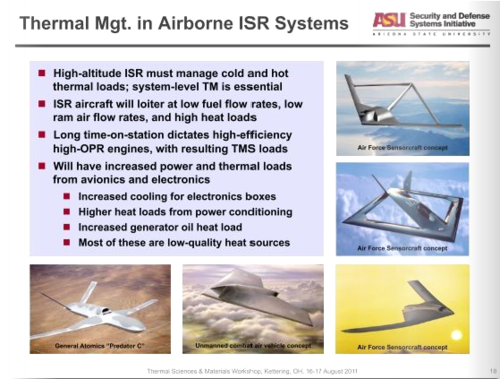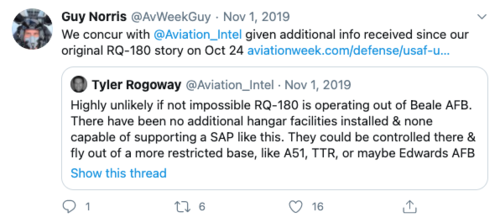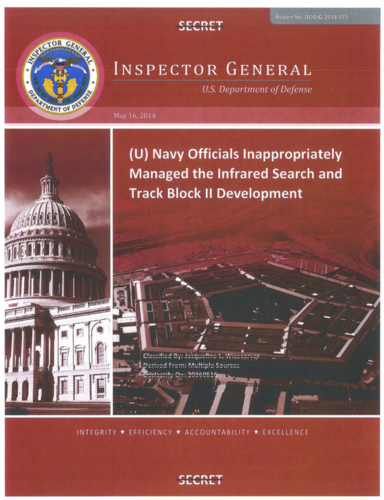Remember a couple of AF Lt. Generals made statements that an advanced ISR aircraft may already be in existence as far back as 2013.
April 2013 Lt. General James Davis, told the Armed Services Committee in an effort to rid the AF of some RQ-4's, states that Global Hawk can not penetrate denied airspace and that there are classified systems that can (eluding to a possible existence of an existing deep-penetration ISR aircraft).
June 9, 2014 USAF Lt. General Robert "Bob" Otto stated that the RQ-180 existed, reported Air Force Magazine. He is the Deputy Chief of Staff for ISR. That comment was never retracted nor confirmed by others in the AF.
There is a long history of generals making statements that confirm penetrating ISR aircraft. I'll just leave this here.
"USAF confirms existence of secret U-2 companion aircraft
A secret reconnaissance aircraft, probably a low-observable (LO) counterpart to the Lockheed Martin U-2, has been confirmed to exist. A footnote in the Defense Airborne Reconnaissance Office's (DARO) 1997 report on unmanned aerial vehicle (UAV) development refers to "the U-2 and the Air Force Special Platform". DARO director Maj Gen Kenneth Israel acknowledges that this reference points to "a covert reconnaissance aircraft ... in the classified world."
The status of the program is unknown, but the context implies that it is at least under development, if not already in service. The vehicle can carry the same sensors as the U-2, including the Raytheon ASARS (Advanced Synthetic Aperture Radar System) and SYERS (Senior Year Electro-optical Reconnaissance System), and it will also be able to carry the Joint SlGlNT Avionics Family (USAF) sensor suite. These systems are designed to be carried on long-endurance subsonic, high-flying aircraft. Additionally, the secret vehicle is probably a manned, LO aircraft, because these characteristics would distinguish it from the U-2 and the RQ-4A Global Hawk UAV.
The existence of such an aircraft has been the subject of speculation for more than a decade, because LO technology is an obvious match to the mission. An LO aircraft would be able to penetrate air defenses, overflying the detection range of lower-powered systems, detecting and locating large radars, and using stand-off sensors to remain outside the effective range of defensive SAMs. It would also be able to operate unobserved in a stand-off mission. The aircraft is probably quite large, combining long endurance with a large sensor and communications payload. It would not be surprising if it were twin-engined, and it could well have a two-member crew -- the U-2's single-seat, single-engine design is a legacy of the original U-2A, and its long missions push the limits of engine reliability and pilot endurance.
The existence of an LO high-flyer may explain why the delays in development of the Lockheed Martin/Boeing Darkstar are not causing undue alarm. The smaller, relatively inexpensive Darkstar, which achieves a very low radar cross section without using the most advanced and sensitive materials, may be critical only against the most heavily defended targets . BS
DARO has acknowledged that a low-observable reconnaissance aircraft, the 'Air Force Special Platform', is in existence, and probably serves as a companion to the U-2. (Photo:Lockheed Martin)"
"Currently, there are four platforms scheduled to receive
either the LBSS, the HBSS, or both. The Air force plans to
install JSAF on two platforms, the RC-135 Rivet Joint and the
Air Force special platform. There are 16 of each of the two
platforms in the Air Force. The navy plans to install JSAF on
its EP-3E aircraft. The Navy maintains 12 EP-3E platforms. The
Army plans to install JSAF on nine Airborne Reconnaissance Low
(ARL) aircraft for a total of 53 manned platforms. Under the
present plan, the Air Force special platform will be the only
aircraft equipped with the LBSS and the HBSS."
"Integration for "Plug and Play" with U-2 and Air Force Special Platform"






